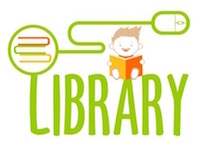Envision a modern library at your school!
A 21st century library
Offers a rich variety of materials to discover
Inspires and celebrates creativity
Uses cutting edge learning and media technologies
Encourages individual and group study

Libraries transform video
Did you know?
The New Market Consortium (NMC) Horizon Report > 2017 Library Edition identified the following trends in libraries:
- Patrons as Creators: “To catalyze creativity, many library makerspaces are adopting emerging technologies such as 3D printers, flexible displays, media production tools, and natural user interfaces to enable the act of making. ” (p. 14).
- Rethinking library spaces: “Students are relying less on libraries as the sole source for accessing information and more for finding a place to be productive” (p. 16).
The NMC Horizon Report > 2016 K-12 Edition identified the following trends in education:
- Redesigning learning spaces: “Student-centric pedagogies are being embraced to better prepare learners for the future workforce, and new approaches to classroom design are supporting this shift” (p. 8).
- Collaborative learning: “The approach involves activities that are generally focused around four principles: placing the learner at the center, emphasizing interaction, working in groups, and developing solutions to real problems” (p. 12).
- Deeper learning approaches: “Engages students in critical thinking, problem-solving, collaboration, and self-directed learning” (p. 14).
- Coding as literacy: “Schools worldwide are developing coding programs in which students collaboratively design websites, develop educational games and apps, and design solutions to challenges by modeling and prototyping new products” (p. 16).
- Students as creators: “Learners are exploring subject matter through the act of creation rather than the consumption of content. A vast array of digital tools is available to support this transformation” (p. 18).
A November 2016 study by Stanford History Education Group assessed the ability of young people to judge the credibility of online information.
- Participants included 7,804 middle school through university students from a wide geographic, socioeconomic range.
- 56 tasks assessed civic online reasoning.
- “Overall, young people’s ability to reason about the information on the Internet can be summed up in one word: bleak” (p. 4).
